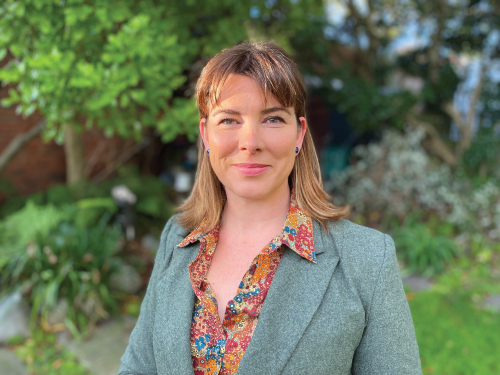Fit for a Better World's vision is more relevant than ever as the food and fibre sector continues to make strides to execute its plans for transformation and drives towards a more productive, sustainable and inclusive future, says MPI's Chief Transformation Officer Jenny Cameron.

Fieldays presents a wonderful opportunity for all of us across the food and fibre sector to catch up, celebrate our successes, share examples of latest innovations, and learn about new developments that can help transform our progress in the seasons ahead.
Against this backdrop, I was proud to release of the Fit for a Better World 2023 Progress Update at Mystery Creek. This report provides an overview of our progress to date, identifies some of the key achievements over the past year and recognises the contribution of the different people and groups in our journey. It is a snapshot of collaborative activity across the country – involving farmers, growers, fishers, foresters, producers, businesses, Māori, industry bodies and government.
It is now three years since the Fit for a Better World Roadmap was released in June 2020, following the launch of the Vision at Lincoln in late 2019. The Vision spoke of an enriched future for New Zealand of high quality, sustainable, ethical products that speak of our land, water, and people.
Fit for a Better World is Vision led, community and business driven, and government enabled. Our 2023 Progress Update is full of examples of this in practice – businesses and communities driving change. Key initiatives from government such as the Sustainable Food and Fibre Futures fund, the Kānoa regional economic development unit, Opportunity Grows Here, and more are working to enable, support and accelerate those efforts.
We recently held a wānanga forum for Fit for a Better World in Ōtautahi Christchurch, which brought together food and fibre leaders from across the country. We reaffirmed the value of the Fit for a Better World Vision and gained renewed support for the partnership and collaboration needed for our journey.
The world we are operating in is changing, and therefore we must change with it. The macro-environment we operate in continues to shift. Climate change and the decarbonisation imperative, demographic shifts, geopolitical shifts, technological progress, and increasingly complex consumer preferences all touch how our global and local food production and trade system operates.
With all this too comes consumers who are more focused on safety, quality, nutrition, sustainability, and value and values. This is a space that New Zealand is perfectly positioned to capture.
This is why Fit for a Better World remains relevant and will continue to evolve as it matures. We draw on the insights and thought leadership from groups such as Te Puna Whaakaronui, Te Hono, Aotearoa Circle, and Ngā Pouwhiro Taimatua. They help us to keep lifting our eyes to the horizon and to see what is around the corner.
Their focus enables us to make tailored interventions to meet our needs for transformation, by unlocking barriers, creating awareness, directing change, developing value, and balancing risk and return with supporting a sustainable ecosystem.
There are sector growth plans for aquaculture, horticulture, food and beverage, agritech, advanced manufacturing, forestry, and fisheries. Sector specific workforce plans in dairy, forestry, fisheries, wine, horticulture are working to deliver on areas of attraction, growth, and retention.
These targeted focused efforts, informed by data and insights, will help us to overcome challenges – including on demonstrating environmental excellence and sustainability credentials for our trading partners, and for our local communities.
With the plans in place, our focus turns towards implementation and execution.
So how are we tracking on the journey to seize our opportunities and meet the targets we have set under the three pillars of productivity, sustainability and inclusivity?
- Food and fibre export revenue is projected to exceed $56 billion in the year to June 2023, on track to surpass the goal of reaching $67 billion in the year to June 2030 (or the additional $44 billion cumulative goal by 2030).
- Agricultural methane emissions have been maintained at a roughly stable level over the last five years. The work of the Centre for Climate Action on Agriculture Emissions and the Centre for Climate Action Joint Venture is gaining momentum.
- More than 16,000 people have been placed into food and fibre work through attraction campaigns such as Opportunity Grows Here.
The pace of change is unlikely to slow. But the benefit of New Zealand is that we are small, our networks are close, we have multi-system operators, and we can adapt. We must be agile and keep honing our priorities, show leadership and act with commitment.
Our mission is to 2030. That gives us enough time to identify priorities and to get things planned and moving – but it is also close enough that we don’t put things off for another day.
This is my second year of delivering the Fit for a Better World progress report. I continue to be inspired and motivated by the efforts, smarts and passion of our land and ocean managers.
There is still much to learn and much to do. This is not easy, but when I read the case studies and see the actions – large and small – I have great confidence and optimism that we will achieve for New Zealand, our customers, and our future generations.
